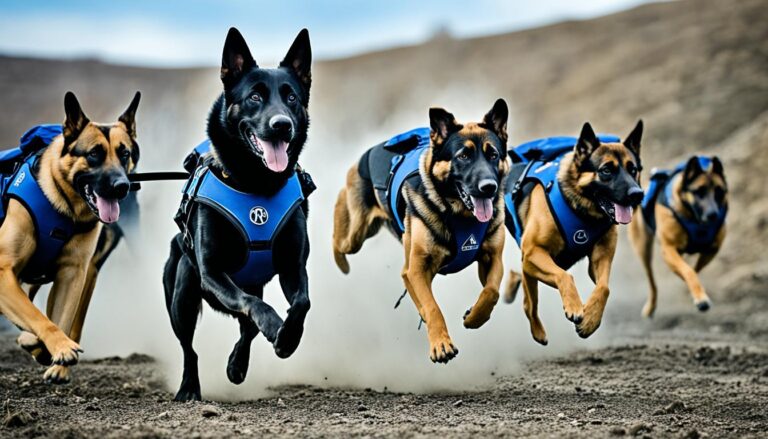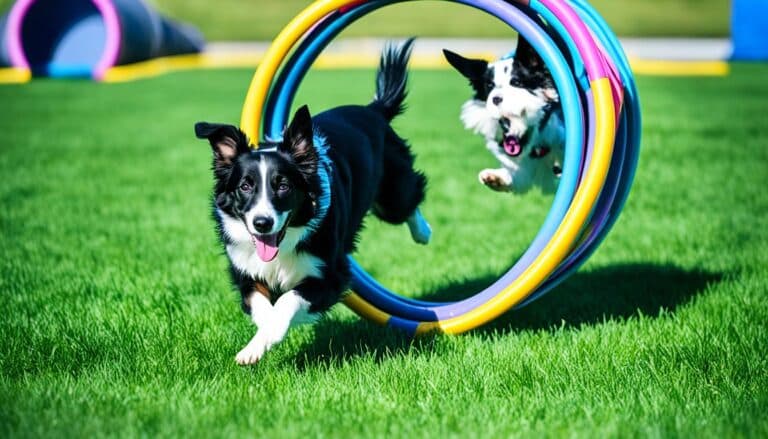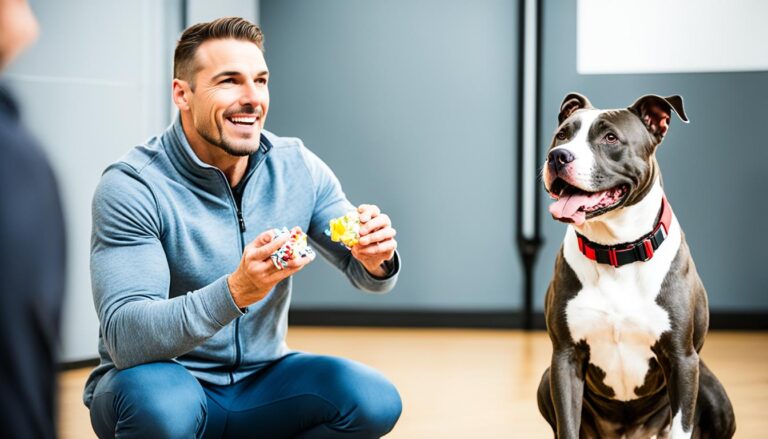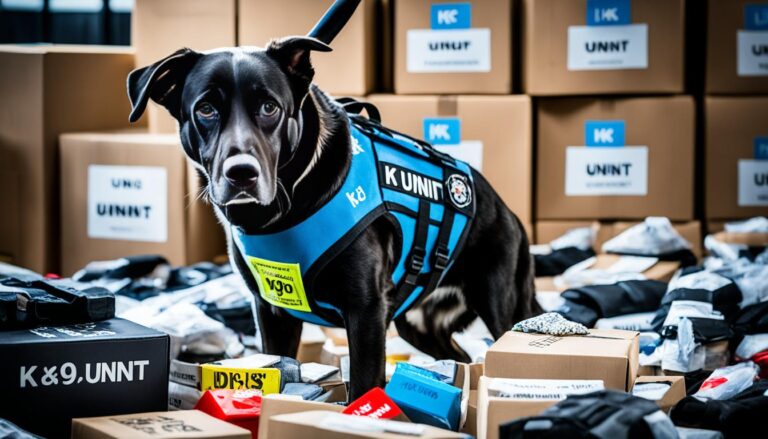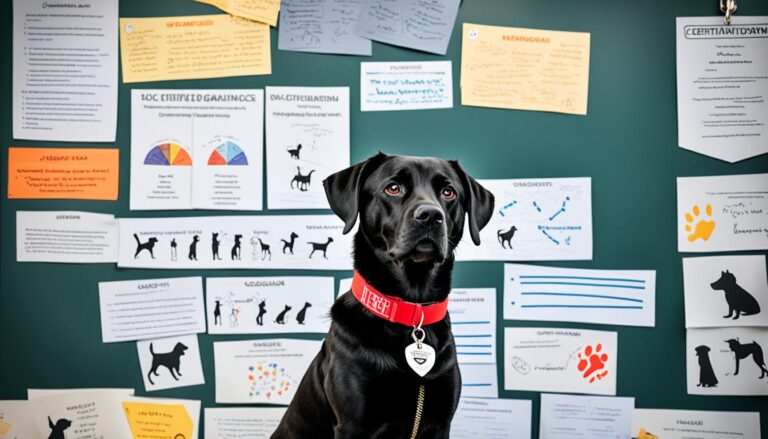How to Train Walking a Dog on a Leash
Walking your dog on a leash shouldn’t be a chore—it should be a joyful experience filled with connection and mutual understanding. Picture this: the warm sun on your face, the crisp morning air filling your lungs, and the rhythmic sound of paws hitting the pavement beside you. As you embark on this daily adventure, your faithful companion walks by your side, tail wagging and eyes sparkling with excitement.
But perhaps right now, that picturesque scene feels like a distant dream. Maybe your walks are more like tug-of-war battles, filled with frustrations and endless pulling. Or maybe you’ve just welcomed a new furry addition to your family and are eager to lay a foundation of good leash manners from the start.
Whichever point you’re at in your leash training journey, we’re here to help you unlock the joy of bonding with your four-legged friend. In this comprehensive guide, we’ll equip you with the essential tips, techniques, and best practices to master the art of leash training. Together, we’ll pave the way for enjoyable walks, solid obedience, and a lifelong bond built on trust and understanding.
Before we dive into the training exercises and strategies, it’s important to understand the significance of leash training. Beyond obedience, leash training provides mental stimulation, physical exercise, and the opportunity for your dog to explore the world alongside their favorite human companion.
So, whether you’re a first-time dog owner or looking to improve your leash walking skills, get ready to embark on a journey of connection, growth, and countless tail-wagging adventures. Let’s dig in and discover the transformative power of leash training together!
Introducing the Collar and Leash
Before you begin leash training your puppy, it’s essential to introduce them to wearing a collar and leash. This gradual and positive introduction will help your puppy become comfortable with these essential accessories, setting the stage for successful collar and leash training.
Start by letting your puppy wear the collar for short periods of time indoors while engaging in play or other enjoyable activities. This will help them associate the collar with positive experiences. You can also provide treats as a reward while they are wearing the collar to reinforce the positive association.
Once your puppy is comfortable wearing the collar, it’s time to introduce the leash. Begin by attaching the leash to the collar and allowing your puppy to explore it under close supervision. Avoid forcing them to walk on the leash at this stage; instead, let them get used to the sensation of having the leash attached.
Gradually increase the duration of collar and leash wear. Start by having your puppy wear them indoors for short periods of time and gradually extend the duration as they become more at ease. Over time, your puppy will grow accustomed to the feeling of wearing a collar and being connected to a leash.
Remember to provide positive reinforcement and rewards during the process, such as praise, treats, or playtime. This will help create a positive association between the collar, leash, and rewards, making future training sessions more enjoyable for both you and your puppy.
Teaching a Cue for Walking
When it comes to leash training your puppy, using a sound cue can be highly effective. This cue serves as a signal that food is coming, motivating your puppy to walk beside you. You can choose from various sound cues such as a clicker sound, saying “yes,” or making a clucking sound with your mouth. The key is to select a cue that is distinct and easy to replicate consistently.
To start, find a quiet and distraction-free environment to begin training. Hold a treat in your hand and make the chosen sound cue. As soon as your puppy turns towards you or looks at you, reward them with the treat. This reinforces the association between the sound cue and the reward, encouraging your puppy to respond positively to the cue.
Repeat this process multiple times in each training session to ensure your puppy understands the connection. Over time, they will learn that responding to the sound cue results in a tasty treat, making it more likely for them to walk beside you when you use the cue during walks.
Remember to be patient and consistent during the training process. Each puppy learns at their own pace, so it’s important to provide plenty of positive reinforcement and give them time to understand and respond to the cue.
Teaching the Puppy to Come
Recalling the puppy is a crucial part of leash training to ensure their safety and maintain control during walks. By teaching your puppy to come to you when called, you can prevent them from wandering off or getting into potentially dangerous situations.
To start teaching the recall command, have your puppy on a leash and call their name in an enthusiastic tone while taking a few steps away from them. As they start moving towards you, use the command “come” in a clear and assertive voice. When your puppy reaches you, reward their obedience with praise and a treat as positive reinforcement.
It’s important to gradually increase the distance between you and your puppy before giving the “come” command. This will help them understand that the command is meant to be followed regardless of the distance between you. Practice this exercise in secure areas with minimal distractions to ensure your puppy’s focus and safety.
Remember to always use positive reinforcement during training sessions, rewarding your puppy each time they respond to the recall command. Over time, your puppy will associate the command with a positive experience and be more likely to come when called.
Practice Inside and Outside
Now that your puppy has a good grasp of the basics of leash walking, it’s time to practice in different environments both indoors and outdoors. By providing your puppy with exposure to various settings, you’ll help them become comfortable with different sights, sounds, and smells they may encounter during walks.
Begin by practicing in a quiet and distraction-free room inside your home. Take a few steps at a time, allowing your puppy to get used to the feeling of the leash. This controlled environment will make it easier for them to focus on the training without being overwhelmed.
As your puppy becomes more confident, gradually increase the difficulty by introducing distractions. Start by walking in a room with minimal distractions, then progress to more challenging areas such as the backyard or a quiet neighborhood. Remember to keep these initial walks short to prevent your puppy from becoming overwhelmed.

Transitioning to outdoor walks is an important step in your puppy’s leash training journey. Start by choosing a calm and safe location, such as a quiet park or a less busy street. This will help minimize distractions and allow your puppy to focus on their leash skills.
During outdoor walks, be patient and understanding as your puppy encounters new stimuli. Sudden noises, people, or other animals may distract them, so use positive reinforcement techniques to redirect their attention back to you. Continue to reward your puppy for good behavior and reinforce the walking cues you’ve been practicing.
Remember, consistency is key when transitioning from practicing inside to walking outside. Gradually increase the duration of the walks and expose your puppy to a variety of environments. This will help them build confidence and adapt to different situations they may encounter during walks in the future.
Troubleshooting Leash Training Issues
Despite your best efforts in leash training, you may encounter some common issues that can make the process challenging. Don’t worry, though, because we’ve got some effective troubleshooting tips to help you address these problems and make your walks more enjoyable.
Addressing pulling and lunging:
- If your dog starts pulling on the leash, it’s important not to yank or jerk the leash. Instead, stand still and refuse to move until your dog comes back to you. This teaches them that pulling won’t get them where they want to go.
- When your dog lunges towards something of interest, quickly redirect their attention with a treat or a favorite toy. Increase the distance between your dog and the target to reduce their excitement and prevent lunging behavior.
Dealing with barking on walks:
- To reduce barking during walks, make sure your dog is getting enough physical and mental stimulation throughout the day. Engage in interactive play and provide puzzle toys or treat-dispensing toys to keep their mind occupied.
- If your dog starts barking during a walk, immediately redirect their attention with a treat or a command to focus on you. Use positive reinforcement to reward them for staying calm and quiet.
Remember, addressing these leash training issues requires patience, consistency, and positive reinforcement. With time and practice, you’ll be able to overcome these challenges and enjoy peaceful walks with your furry friend.
Gradual Reduction of Treats
While using treats as rewards during leash training is effective, it is important to gradually reduce their use. Start by rewarding your dog with a treat most of the time, and gradually decrease the frequency. Instead, provide verbal praise and occasional treats to reinforce positive leash-walking behavior. This will help your dog become less reliant on food rewards and maintain good leash-walking behavior.
During leash training, treats serve as a powerful motivator for your dog to learn and follow commands. They create a positive association with the desired behavior and help establish good habits. However, relying solely on treats can result in your dog becoming too dependent on them, which may hinder their progress in leash training.
To wean off food rewards and transition to verbal praise, begin by rewarding your dog with a treat for every successful leash-walking session. As your dog becomes more comfortable and proficient, gradually reduce the frequency of treat rewards. Instead, introduce verbal praise such as “Good job” or “Well done” accompanied by physical affection, such as petting or a gentle pat on the head.
Remember to consistently reinforce positive behavior and praise your dog when they exhibit good leash-walking skills. Verbal praise and occasional treats should be used strategically to reward your dog’s progress and maintain their motivation. By gradually reducing treats and transitioning to verbal praise, you can ensure that your dog remains motivated and engaged during leash training.
Choosing the Right Equipment
When it comes to leash training, selecting the appropriate equipment is essential for a successful and enjoyable experience. The right leash, leash length, and material can make a significant difference in your dog’s comfort and control. Additionally, choosing between a harness and a collar is an important decision that can impact your dog’s safety and well-being.
Choosing the Leash
First and foremost, ensure that your leash is in good condition. Check for any fraying or weak spots that could potentially break during walks. A strong and sturdy leash will provide you with confidence and peace of mind.
Consider the length of the leash based on your training needs. A shorter leash, typically around 4 to 6 feet, offers better control during training sessions and walks in busy areas. On the other hand, a longer leash, around 8 to 10 feet, allows your dog more freedom to explore while still maintaining a level of control.
When it comes to material, choose a leash that feels comfortable in your hands. Nylon and leather leashes are popular choices due to their durability and flexibility. Consider your grip and the weather conditions in your area when deciding on the best material for you and your dog.
Harness vs. Collar
While traditional collars are commonly used, some dog owners prefer using a harness for leash training. A harness offers more control and reduces the risk of neck injuries, especially for dogs prone to pulling or straining against the leash.
A well-fitted harness distributes the pressure evenly across your dog’s body, minimizing strain on the neck and throat. This can be particularly beneficial for small breeds, brachycephalic breeds with respiratory issues, or dogs with sensitive tracheas.
However, it’s important to consider your dog’s size, breed, and specific needs when deciding between a collar and a harness. Some dogs may be more comfortable with a collar, while others may benefit from the added support and control of a harness.
Ultimately, the choice between a collar and a harness depends on what works best for you and your dog’s comfort, safety, and training goals.
Remember, always consult with a professional dog trainer or veterinarian for personalized advice and guidance on choosing the right equipment for your dog.
The Importance of Reward-Based Training
Reward-based training, utilizing positive reinforcement techniques, is a highly effective and humane approach to teaching dogs. By rewarding desired behaviors with treats, praise, or toys, while ignoring or redirecting unwanted behaviors, you can establish a strong bond with your furry companion while making training sessions enjoyable for both of you.
This method of training focuses on promoting positive behaviors rather than punishing or using aversive techniques. Using rewards encourages your dog to repeat behaviors that are desirable to you, reinforcing their learning and understanding of what you expect from them. It also helps to build their confidence and trust in you as their caregiver.

When implementing reward-based training, consistency is key. Ensure that rewards are delivered promptly and in a manner that your dog finds valuable. For some dogs, treats may be the most effective motivator, while others may respond better to verbal praise or playtime with their favorite toy.
Benefits of Reward-Based Training:
- Encourages positive behavior and cooperation
- Strengthens the bond between you and your dog
- Fosters a positive learning experience for your dog
- Helps prevent anxiety and defensive aggression
- Creates a harmonious and trusting relationship
Avoid aversive techniques or punishments during training, as they can elicit fear, anxiety, and defensive aggression in dogs. Instead, focus on rewarding and reinforcing positive behaviors to shape your dog’s behavior effectively.
Throughout the training process, keep in mind that each dog is unique in their learning style and preferences. Tailor your rewards and training techniques to suit your dog’s individual needs. If you find that your dog is not responding as expected, consult with a professional dog trainer or behaviorist who specializes in reward-based training to troubleshoot any challenges you may be facing.
Ensuring Safety and Continued Training
To ensure the safety of your dog during walks, it is essential to prioritize ongoing leash training and reinforce good behaviors. Consistency is key when it comes to teaching your dog proper leash-walking habits. Regular training sessions will help your furry friend understand the expectations and boundaries of walking on a leash.
During your walks, remember to keep a watchful eye on your surroundings to ensure the safety of both you and your dog. Be aware of potential hazards, such as busy roads, unfamiliar dogs, or other distractions that may cause your dog to become anxious or reactive. By staying alert and proactive, you can avoid potential accidents or confrontations.
If you encounter challenges or have specific concerns while leash training, seeking professional guidance from a certified dog trainer or a veterinarian can provide invaluable assistance. They have the expertise and experience to address your unique circumstances and provide personalized advice to help you and your dog overcome any obstacles in the training process.
Remember that every dog is unique, and training progress may vary. Be patient and persistent, and most importantly, enjoy the journey of helping your furry companion become a well-behaved and confident leash walker. With ongoing training and professional guidance, you can ensure the safety of your dog during walks and build a strong bond based on trust and positive reinforcement.

